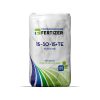
Safely Managing Cattle During TB Testing – Expert Tips
Cattle, with their substantial size, weight, speed, and strength, present unique challenges when combined with TB testing – an unfamiliar and often stressful situation for them. This situation can be not only challenging but potentially hazardous for the people involved.
Farmers bear a legal responsibility to ensure the safety of their animals during TB testing. The Animal and Plant Health Agency (Apha) now places significant emphasis on following correct procedures during testing. This includes having well-designed and properly maintained handling facilities appropriate for the size, category, and temperament of the cattle being tested.
Livestock handling expert Miriam Parker stresses that safely presenting animals for testing reduces risks to handlers and minimizes stress for the cattle. It also enhances job efficiency and the accuracy of the test results.
Parker provides the following tips on important dos and don’ts:
- Familiarize Cattle with Facilities: Introducing cattle to the handling facilities before the test is crucial. Running them through the facilities prior to the test day helps them associate the area with neutral or positive experiences, reducing their stress.
- Maintain Routine: Sticking to a normal routine is key. Extra people can unsettle the animals, so minimizing their presence is beneficial. Cattle can be sensitive to unfamiliar scents, so keeping the testing team away and involving familiar farm staff in handling is wise.
- Choose a Full-Body Restraint Crush: A crush that secures the entire body of the animal is safer. Avoid clamping their heads solely, as this can lead to resistance. Squeeze crushes or other models that encircle the animal are preferable for better restraint.
- Secure the Crush Properly: Anchoring the crush securely is essential. A properly anchored crush prevents movement or tipping, which is a requirement for testing teams. Ensure the crush is suitable for your animals’ size and weight.
- Maintain the Crush Floor: The crush floor should be stable and non-slip to prevent animals from slipping and injuring themselves. Regular maintenance is important, as a well-maintained old crush can be safer than a poorly maintained new one.
- Provide Access to Test Site: The crush design should allow testers easy access to the part of the animal being tested. In high TB areas, consult with veterinarians to ensure the crush is suitable for their needs.
- Front and Back Restraints: A functional front catch mechanism is necessary. Preferably, have farm staff operate it to avoid accidents. Back gate or bar restraints are vital for preventing animals from kicking out.
- Protected Working Area: Testers and handlers need a cattle-free zone to focus on their tasks. Protecting samples, paperwork, and the tester from cattle interference is essential for accurate testing.
- Take Regular Breaks: Planning regular breaks during large handling events helps maintain focus. Providing short breaks to uncooperative animals can help them refocus and cooperate better.
- Analyze Post-Test: After testing, assess the process. Identify strengths and areas for improvement and take immediate action to address any issues before the next test.
Ensuring the safety and comfort of both cattle and handlers during TB testing is paramount. Following these expert tips can lead to safer, more efficient testing processes and better outcomes for everyone involved.










